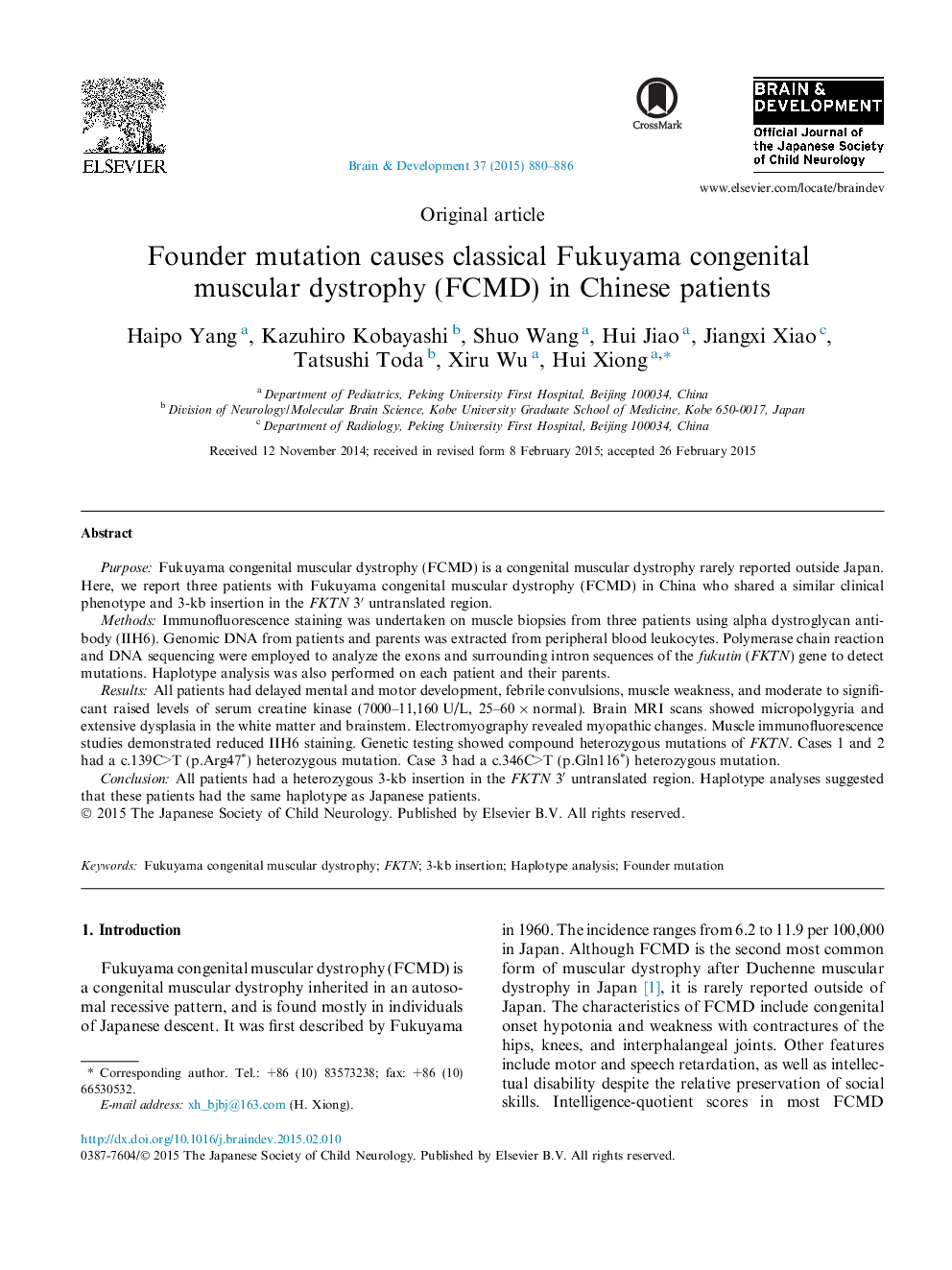| Article ID | Journal | Published Year | Pages | File Type |
|---|---|---|---|---|
| 3036580 | Brain and Development | 2015 | 7 Pages |
PurposeFukuyama congenital muscular dystrophy (FCMD) is a congenital muscular dystrophy rarely reported outside Japan. Here, we report three patients with Fukuyama congenital muscular dystrophy (FCMD) in China who shared a similar clinical phenotype and 3-kb insertion in the FKTN 3′ untranslated region.MethodsImmunofluorescence staining was undertaken on muscle biopsies from three patients using alpha dystroglycan antibody (IIH6). Genomic DNA from patients and parents was extracted from peripheral blood leukocytes. Polymerase chain reaction and DNA sequencing were employed to analyze the exons and surrounding intron sequences of the fukutin (FKTN) gene to detect mutations. Haplotype analysis was also performed on each patient and their parents.ResultsAll patients had delayed mental and motor development, febrile convulsions, muscle weakness, and moderate to significant raised levels of serum creatine kinase (7000–11,160 U/L, 25–60 × normal). Brain MRI scans showed micropolygyria and extensive dysplasia in the white matter and brainstem. Electromyography revealed myopathic changes. Muscle immunofluorescence studies demonstrated reduced IIH6 staining. Genetic testing showed compound heterozygous mutations of FKTN. Cases 1 and 2 had a c.139C>T (p.Arg47∗) heterozygous mutation. Case 3 had a c.346C>T (p.Gln116∗) heterozygous mutation.ConclusionAll patients had a heterozygous 3-kb insertion in the FKTN 3′ untranslated region. Haplotype analyses suggested that these patients had the same haplotype as Japanese patients.
